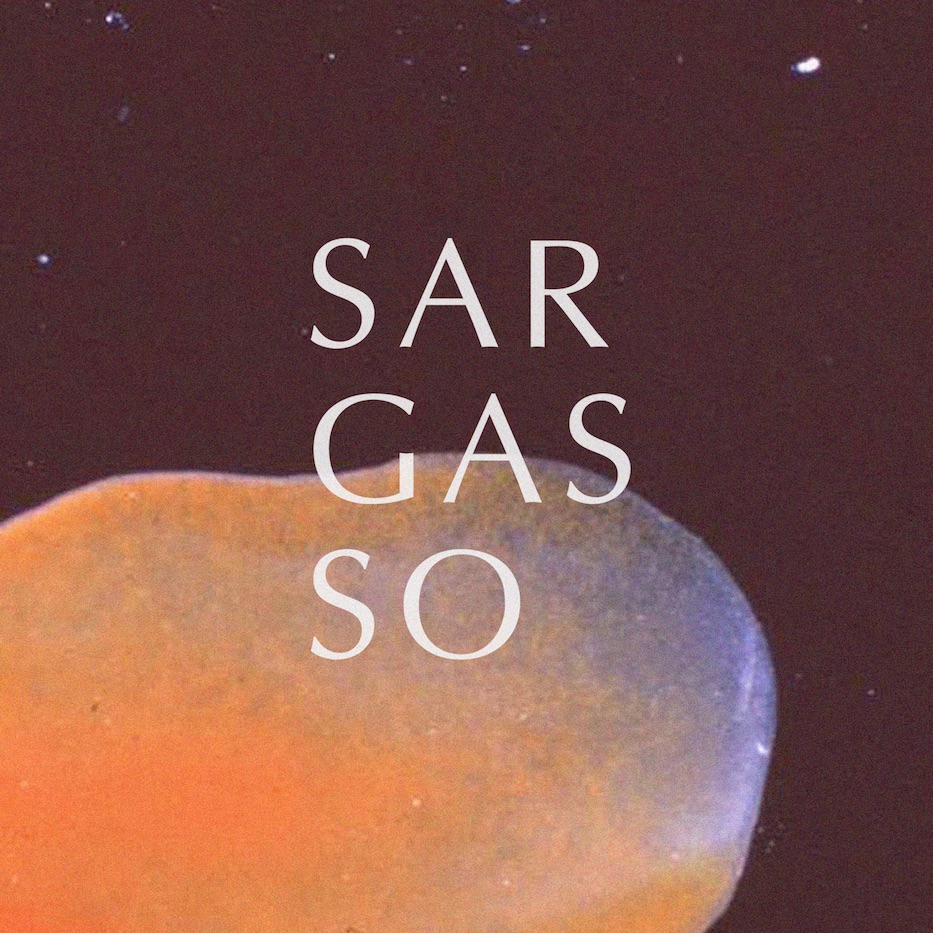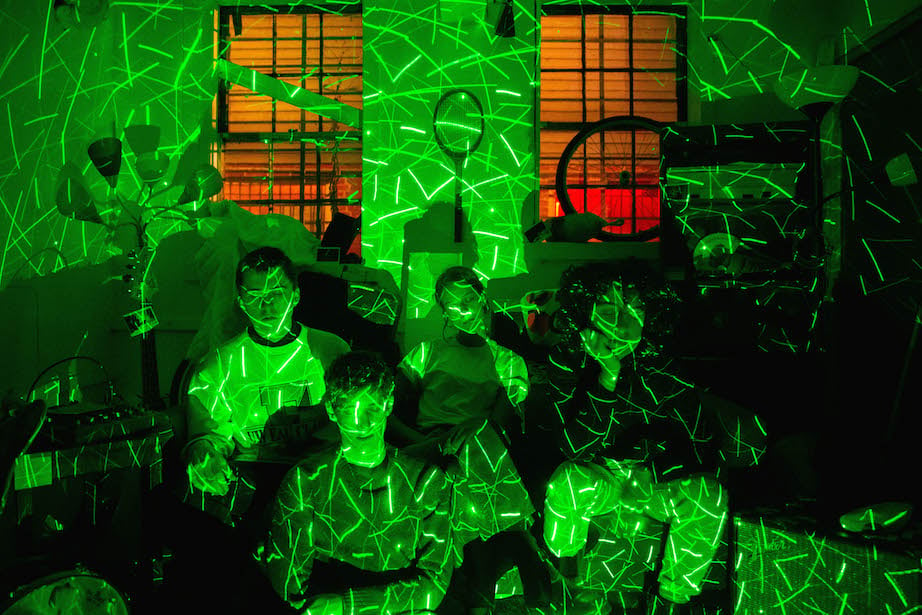
Cafe Nine | Music | Arts & Culture

| The band performs at Cafe Nine Jan. 29. Album artwork by Soledad Tejada and Maria Campos Saadi. |
The vocals are soft and lush. Arpeggios echo across the soundscape. Tambourines pop up in unexpected places, while guitars crunch and the synth pulses.
It all adds up to a cohesive suite of songs from New Haven’s indie-rock four-piece Sargasso.
Sargasso—that’s Thomas Hagen, Soledad Tejada, Maria Campos Saadi, and Noah Goodman—released their self-titled EP in December 2019. It’s the group’s second recording, a collection of five cherry-picked songs that find the band working in new ways. The EP features Hagen on drums and vocals, Tejada on keys, guitar, and vocals, Saadi on bass and vocals, and Goodman on guitar, keys, and vocals.
“Sargasso is a word that just rolls off the tongue and it’s soft and nice and pretty,” Goodman said in a recent interview. “I think soft and nice and pretty is where our sound starts from and we try to do more complicated things with those ingredients.”
“One Enemy,” the first track on Sargasso, starts with a soft, bittersweet guitar lick, then Tejada’s synth enters, reminiscent of an organ. The beat settles in; a percussive guitar strum and the light jangle of a tambourine round out the sound.
Three of the band’s four members are vocalists, and Goodman takes lead on this tune. “the tree grew and was strong; reached all the way up to heaven/ a long fall to its grave,” he sings. The lyric seems to unite humans with other living beings in the struggle against threats to our natural world.
In the instrumental section after the chorus, the tambourine is bright, the synth is soft, and Goodman’s guitar takes on a crunchy distortion. The sound is layered like flavors in a good soup, with the crunchy guitars adding a bold zest.

Then, too soon after it starts, the layers drop out, leaving just the melody of the verse, the “oohs” in the backing vocal clear and simple, like a sip of cool water.
The song ends unresolved, leaving the listener leaning forward as the “Secret Compartment” starts with an atmospheric synth that builds into arpeggiated riffs with a retro vibe. In the middle of the chorus, the song takes a soulful turn with a set of stacked harmonies that’s at once unexpected and perfectly natural.
“I’m gonna make it all make sense now till you feel me/ holding on to you,” Sargasso croons.
Then, just like a dream, the short song is over. The riffs from the beginning of the track return at the end to connect it with “No Streetlights.” Tejada sings lyrics that tumble over and over alongside the rhythm. The melody is steady, but hits the upbeats in a way that is pleasantly off-kilter. It feels like a quirky homage to the bond between siblings and the balance between protecting someone and letting them go.
The last echoing notes of the synth seem to fade away into the clouds and “Lifetime” starts in that vacuum, before Hagan’s drums and tambourine take it to a lighter place. It’s a road trip song right away, both in content and in feel.
“And all the words you should have said ... all the years you spent with your back against the wall/ just to make one thing beautiful,” Goodman sings. “And it takes a lifetime.”
There’s something classic about the short, catchy melody of the hook; by the second chorus it's hard not to sing along. The music builds and builds around that simple melody, layering in those crunchy guitars again. At the ending, a tonic chord stretches out, distorts, feeds back, pulses and fades down to a single note.
In the later “Evergreen/18," the tambourine sneaks back in again, one jingle as a time. Two more voices ease into the mix and suddenly it’s a lush bouquet of vocals. Wordless ooh’s and snatches of the lyrics sung with alternate melodies weave through and around each other.
The yearning, sad song flows into a new hook that starts softly with the guitar, is picked up by the synth, and then given a new life with a faster tempo and fresh beat. It’s an unexpected groove that in turn gets turned on its head. The song ends unresolved, right in the middle of that hook, leaving the listener waiting for something else to come.
In this sense, Sargasso’s sound is smooth and pulsing, textured and calm, reminiscent of the sea they’re named after. The band’s work has matured over the two years they’ve been together—the songs on Sargasso inherently belong with each other.
Members use beginnings and endings like touchstones to allow one song to flow into another, and the work almost plays like a single piece. As a songwriting team, Sargasso is bursting with melodies. Catchy little riffs are tucked into the corners of each song, and it seems like every time a verse or chorus rolls back around there’s a variation in the tune.
Sargasso will play Cafe Nine on Jan. 29 and then release a music video for “No Streetlights,” co-directed by Tejada and Emily Yue, on Feb 1. This winter will see them playing shows in Philadelphia and New York before returning to New Haven venues in the spring.
As the bandmates finish up their final year of college, they’re not sure what will happen with the band. For the months they have left to collaborate, they plan to “see what we can make happen.”
To listen to the album, check out Sargasso on Bandcamp or click on the audio below.

